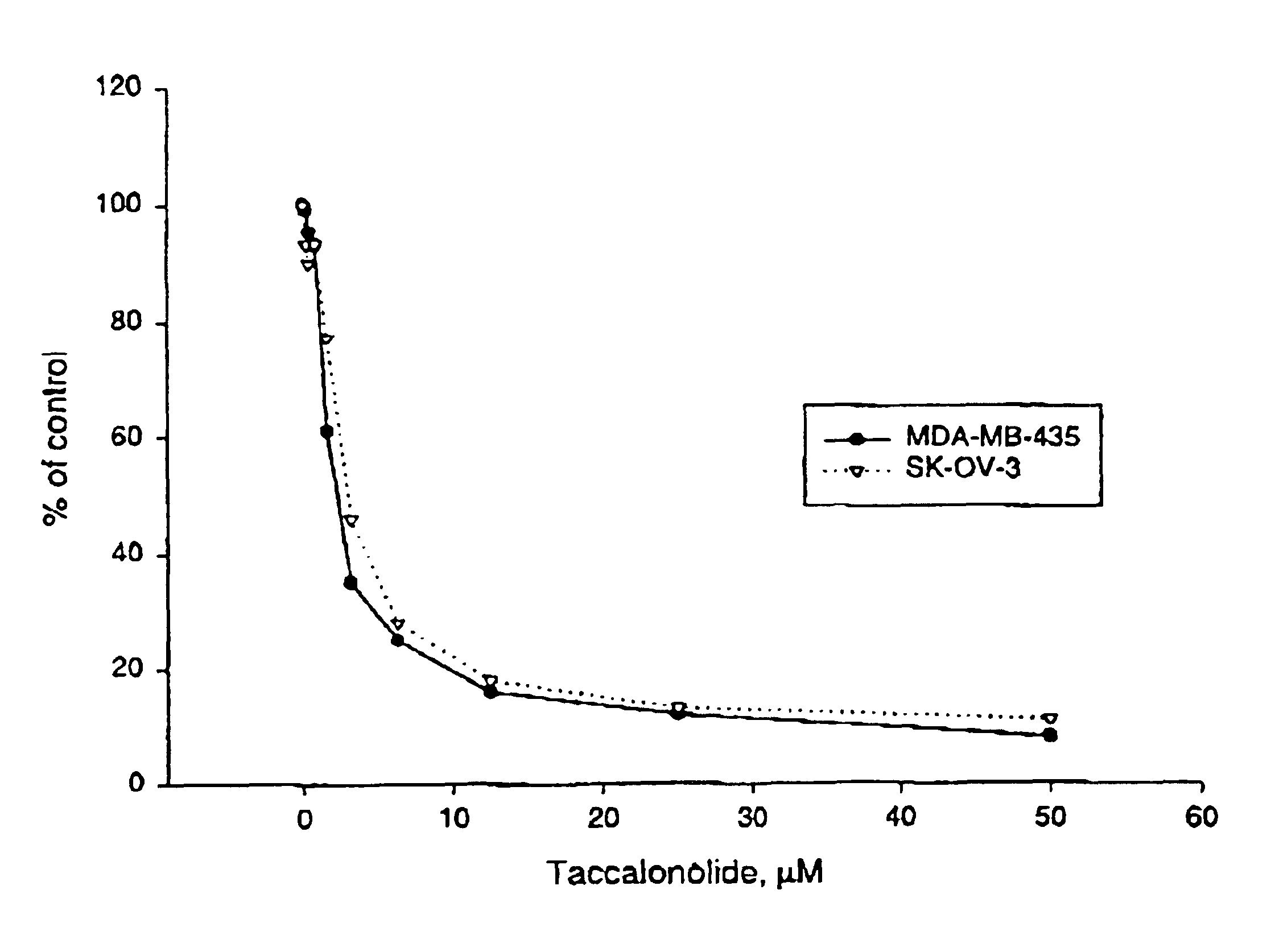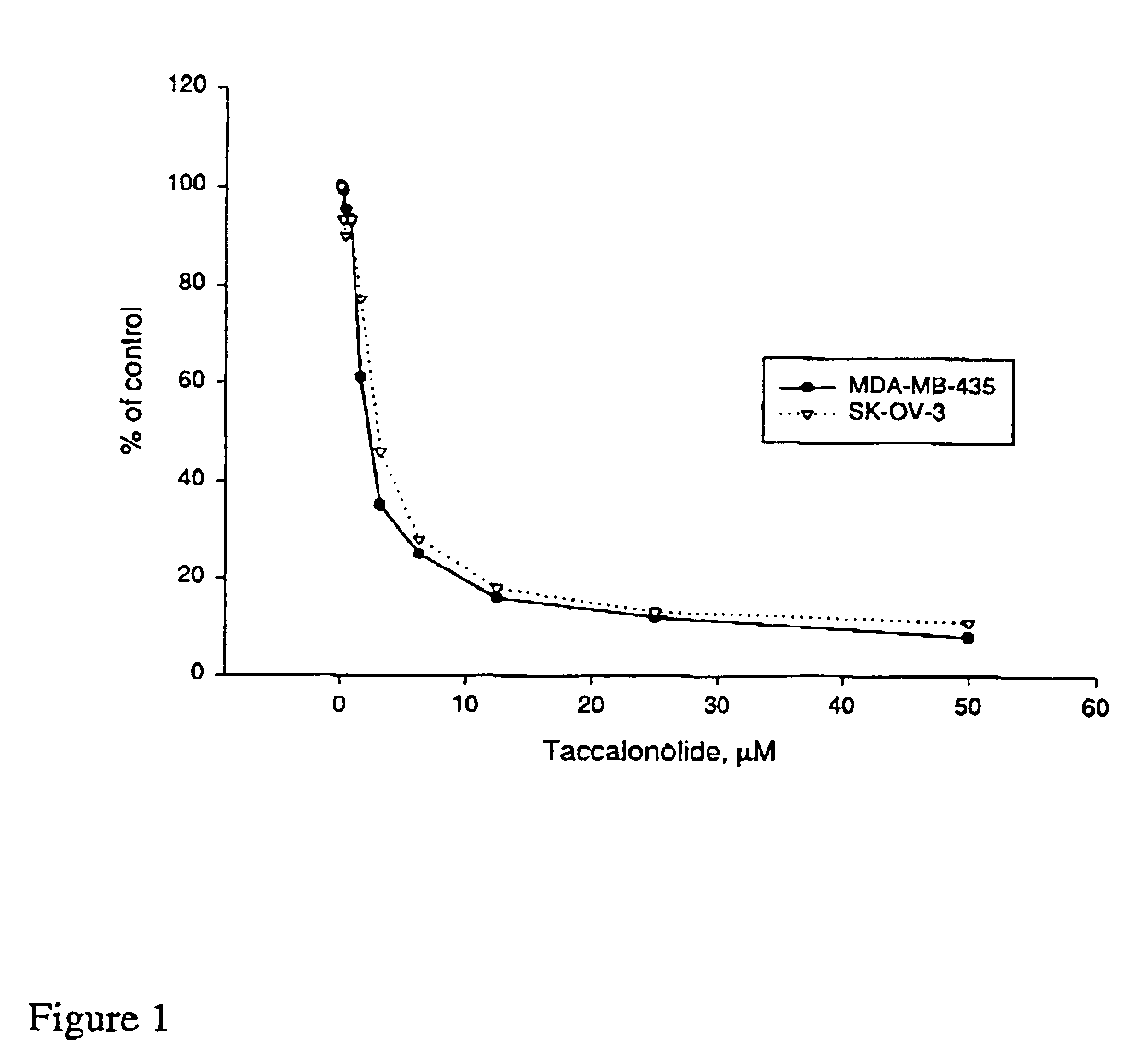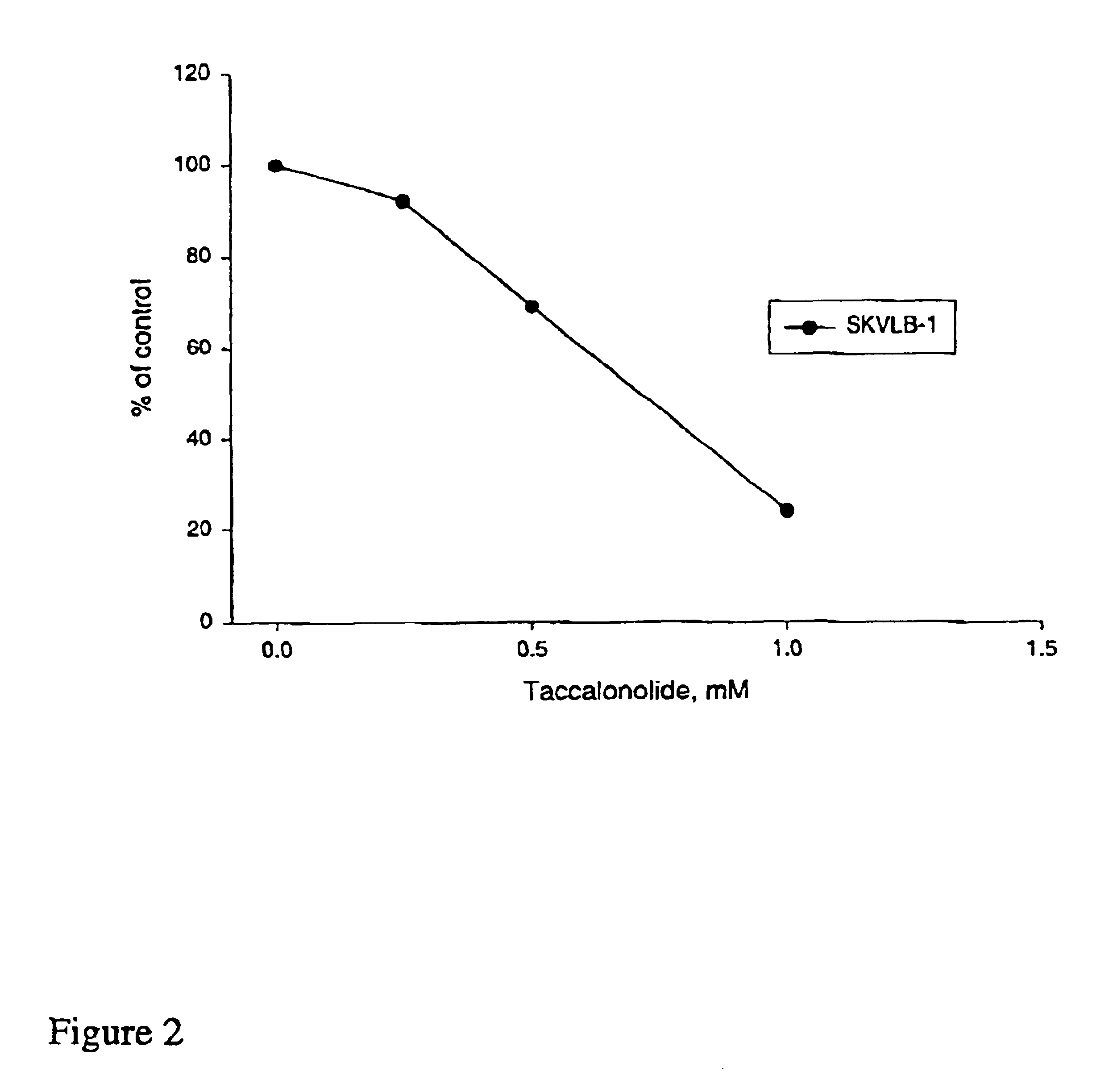Taccalonolide microtubule stabilizing agents
a technology of taccalonolide and microtubule, which is applied in the direction of steroid, medical preparations, organic chemistry, etc., can solve the problems of less potent, and achieve the effect of effective inhibition of proliferation and poor substrate for p-glycoprotein-mediated transpor
- Summary
- Abstract
- Description
- Claims
- Application Information
AI Technical Summary
Benefits of technology
Problems solved by technology
Method used
Image
Examples
example 1
Isolation and Purification of Taccalonolide A
Taccalonolide A was obtained as a lipophilic extract of Tacca chantrieri obtained from the Lyon Arboretum (Honolulu, Hi.), and subjected to bioassay-directed purification. Lyophilized tubers of Tacca chantrieri were ground to a fine powder and extracted twice by stirring with dichloromethane / isopropanol (7 / 3 v / v) for 24 hours at room temperature. The extraction was repeated under identical conditions with fresh solvent, solids were filtered off, and the combined extracts were evaporated in vacuo below 40° C.
The residue was dissolved in 90% (v / v) aqueous methanol and extracted three times with equal volumes of hexanes, and the hexane fractions were discarded. The aqueous methanol phase was diluted with water to 80% (v / v) aqueous methanol and extracted three times with equal volumes of toluene. The combined toluene fractions were evaporated in vacuo below 40° C. to dryness. The residue was dissolved in a minimum amount of dichloromethane an...
example 2
Cell Culture
A-10 rat aortic smooth muscle cells, SK-OV-3 human ovarian carcinoma cell line and HeLa cells were obtained from the American Type Culture Collection (Manassas, Va.) and were cultured in BME containing 10% FBS and 50 μg / 1 mL gentamycin sulfate. A sub-line of SK-OV-3 selected for resistance to vinblastine (SKVLB-1) was provided by Dr. Victor Ling (British Columbia Cancer Center, Vancouver, British Columbia) and was maintained in BME containing 10% FBS and 50 μg / 1 mL gentamycin sulfate. The A-10, HeLa, SK-OV-3, and SKVBL-1 cells were grown in Basal Medium Eagle containing Earle's salts, 50 μg / ml gentamycin, and 10% fetal bovine sorum (Hyclone, Logan Utah). Vinblastine was added to a final concentration of 1 μg / mL to SKVLB-1 cells 24 hours after passage to maintain selection pressure for P-glycoprotein-overexpressing cells. The MDA-MB-435 human mammary adenocarcinoma cell line was obtained Dr. Mai Higazi (Georgetown University, Washington, D.C.), and was maintained in Richt...
example 3
Inhibition of Cell Proliferation
The IC50 for inhibition of cell proliferation was determined by measuring cell-associated protein after drug treatment using the sulforhodamine B assay (see, for example, J. Natl. Cancer Inst. 82:1107-1112 (1990) and Drug Development Res. 34:91-109 (1995)).
PUM
 Login to View More
Login to View More Abstract
Description
Claims
Application Information
 Login to View More
Login to View More - R&D
- Intellectual Property
- Life Sciences
- Materials
- Tech Scout
- Unparalleled Data Quality
- Higher Quality Content
- 60% Fewer Hallucinations
Browse by: Latest US Patents, China's latest patents, Technical Efficacy Thesaurus, Application Domain, Technology Topic, Popular Technical Reports.
© 2025 PatSnap. All rights reserved.Legal|Privacy policy|Modern Slavery Act Transparency Statement|Sitemap|About US| Contact US: help@patsnap.com



